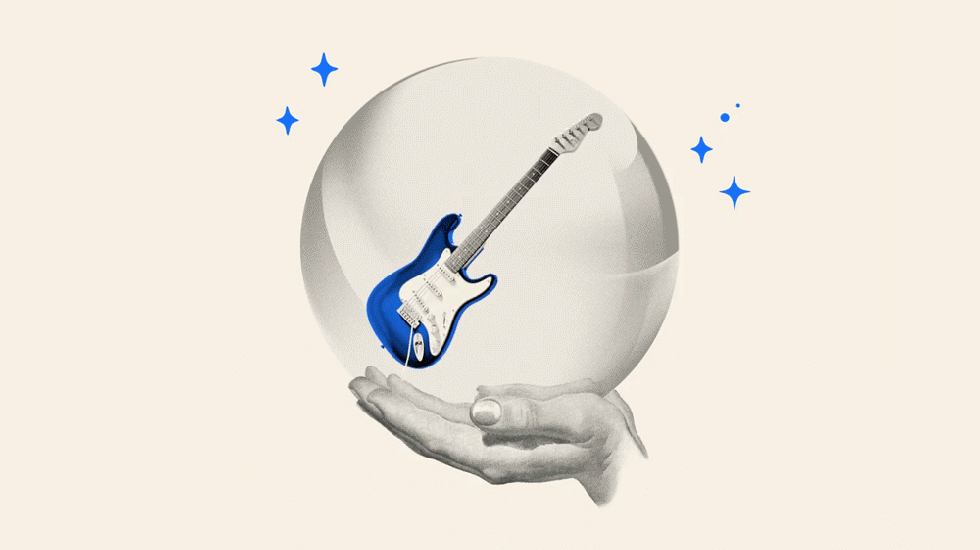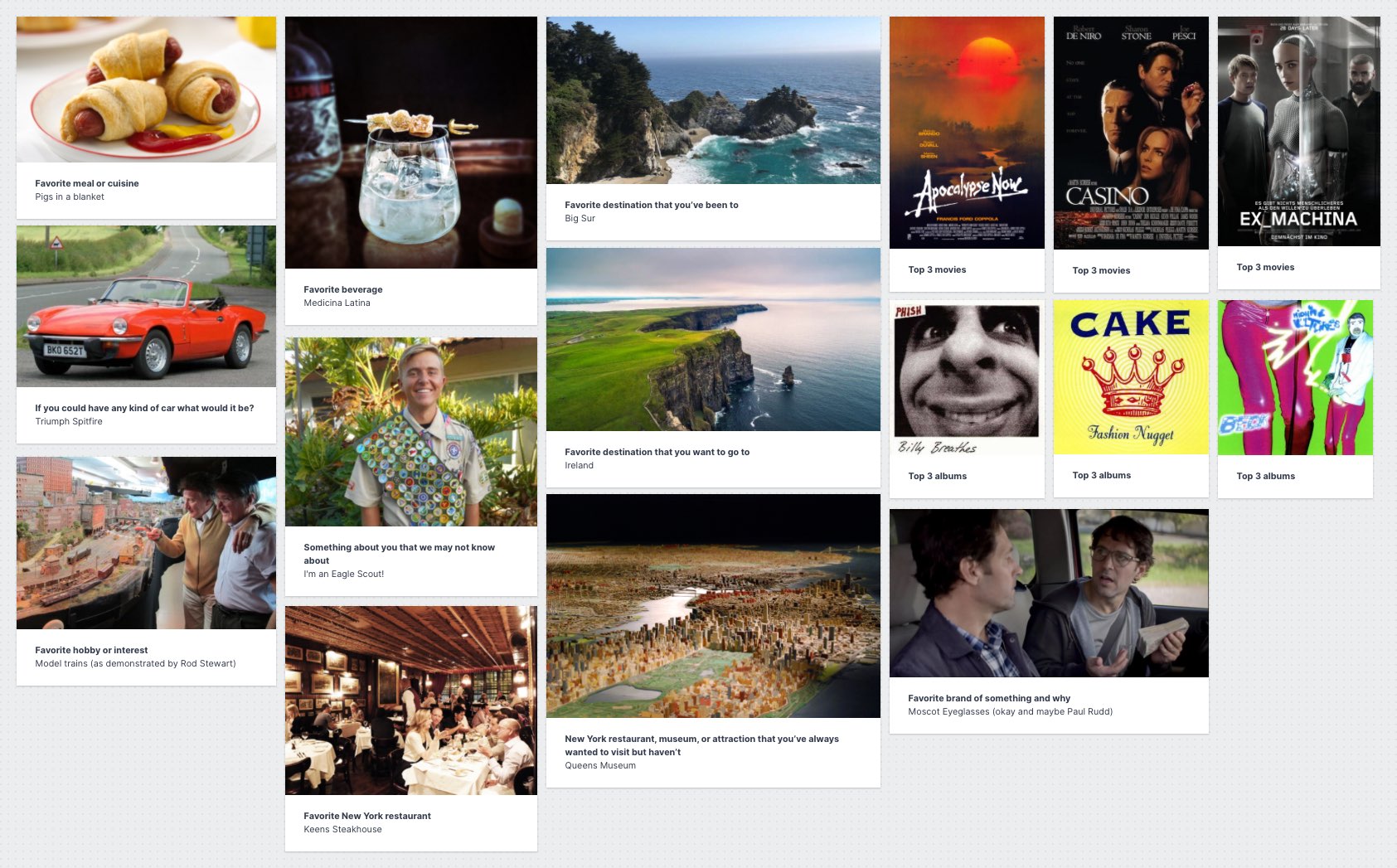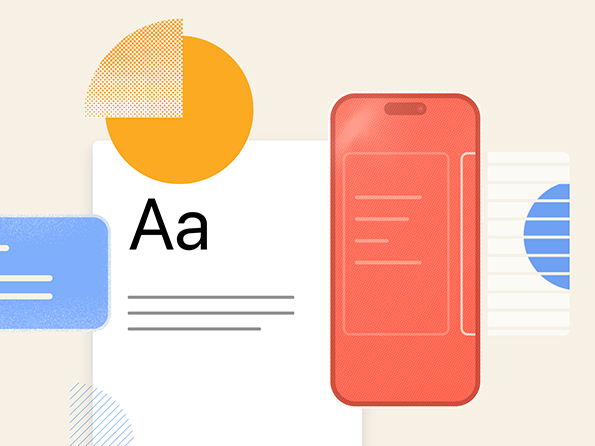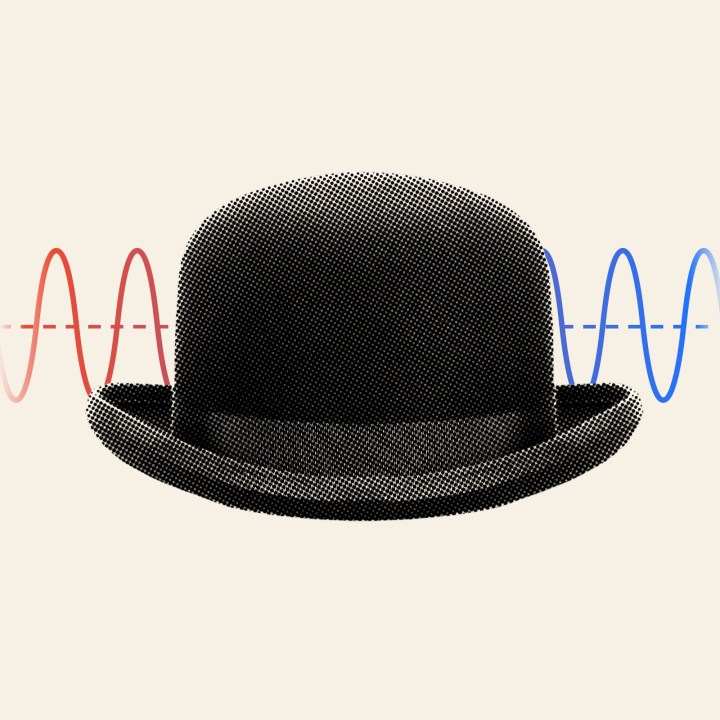Mood Boards as a Catalyst for Company Culture
How to use mood or “vision” boards to engage your team members, strengthen their bonds, and empower them to pursue their personal goals.

At some point in your childhood you probably made a vision board by clipping pictures from magazines and pasting them to poster board.
A vision board is a collage of images and text that represents everything you want to do, be, and have in life. It can also include interests, hobbies, activities, places you’d like to visit, and larger personal goals.

It’s similar to the mood boards North Street creates for branding and design projects, except we swap interests and hobbies for aspirational samples of color, pattern, imagery, and type.
While vision boards are a fun way to teach kiddos about goal setting, they can also be an extremely useful bonding tool in the workplace, where connecting with colleagues, especially remotely, is vital to team health.
We recently implemented a company-wide version of this vision board to great effect. Here’s how your organization can also benefit from this exercise.
How can vision boards build team culture?
Vision boards are a simple and effective way to visualize your goals and aspirations. Building a vision board is an exercise in self-discovery, prompting you to think deeply about what makes you happy, how you’d like to improve your life, and where you’d like to be in the future.
The goal of a vision board in a professional setting is less lofty but significant nonetheless. There’s still an element of self-exploration, but it’s done with the intent of sharing pieces of yourself with coworkers. Your board gives colleagues a peek behind the curtain, revealing the things that inspire and motivate you.
Managers can use this information to craft personalized incentives and rewards that can be more meaningful than monetary compensation. For example, if a team member reveals that they’re a diehard Yankees fan, the promise of comped box seats demonstrates you really care about that team member’s personal interests.
Relationships with colleagues benefit as well. Team members frequently learn new things about each other, discovering shared interests they weren’t aware of. The stronger the bond shared by a group, the better they work together. As a recent Harvard Business Review article points out, this begins a positive feedback loop that enhances collaboration, morale, and productivity.
What goes on a vision board?
Specific elements are entirely up to you, but we recommend a mix of topics that spans interests and hobbies, material aspirations, and personal growth goals. At North Street, we provide team members with 12 prompts and ask them to source images for the 10 they most identify with:
- Favorite meal or cuisine
- Favorite beverage
- Favorite destination you’ve visited
- Top destination you’d love to see
- Top three albums, songs, movies, TV series, books, podcasts, or video games
- Three people you’d love to have dinner with, past or present
- Dream vehicle
- Something we may not know about you
- Favorite New York restaurant
- New York restaurant, museum, or attraction you’ve been meaning to visit but haven’t yet
- Favorite sport and/or sports team or athlete
- Favorite brand of something and why
- Favorite hobby or interest
The possibilities are endless — just remember to keep your prompts broad. For example, don’t prompt a team member to list their 3 favorite rock bands; do prompt them to list their 3 favorite performing artists.
How do you create a vision board?
As mentioned earlier, poster board isn’t required anymore, although you can certainly still build your boards this way if you prefer. Digital boards are considerably easier to create and share with remote team members.
Our team members source images through sites like Google Images and Pinterest and add them to a digital board using Milanote, a visual organizer tool (that, incidentally, we use to create mood boards for branding and design projects). Any tool that allows you to freely arrange and annotate images will do the trick.
How do you implement a vision board program?
At North Street, we’ve created programs for both new and existing team members.
New hires are asked to build a board as part of the onboarding process. They then share their vision board during a morning stand up meeting or Friday happy hour. It’s a great icebreaker and serves to introduce a rookie to their new coworkers.
When we rolled out vision boards to our existing team, each team member was given time to build a board and then assigned a week when they’d share it with the company. Smaller organizations can take this company-wide. Larger enterprises may be better served organizing the program on the department or team level.
Have fun!
P.S., Our vision boards were inspired by the fabulous Sel Watts and her employee “dream catcher.” Learn more about Sel here.

About north street
We engineer the thoughtful transformation of great organizations. Our proven process helps us understand what your competitors are doing right — and wrong. Want to learn more? Let’s chat.



























